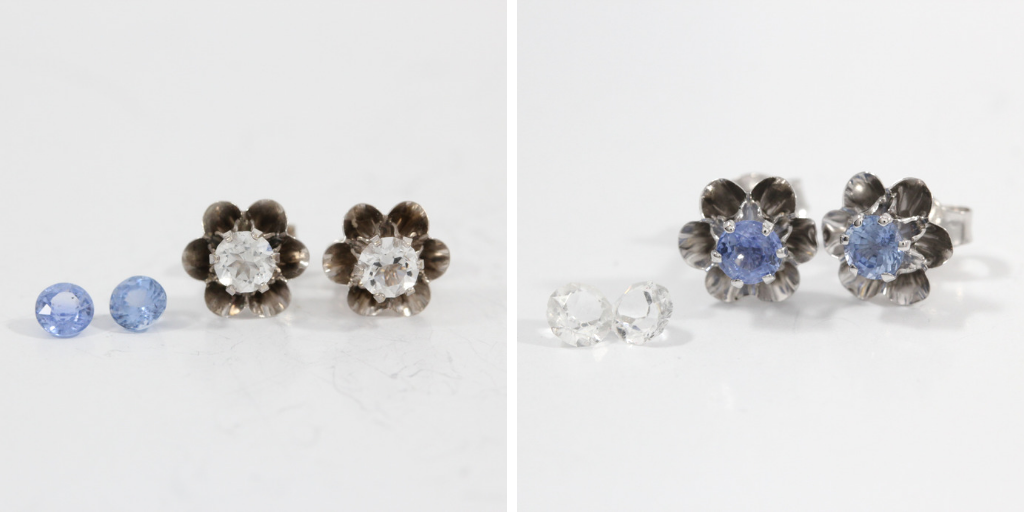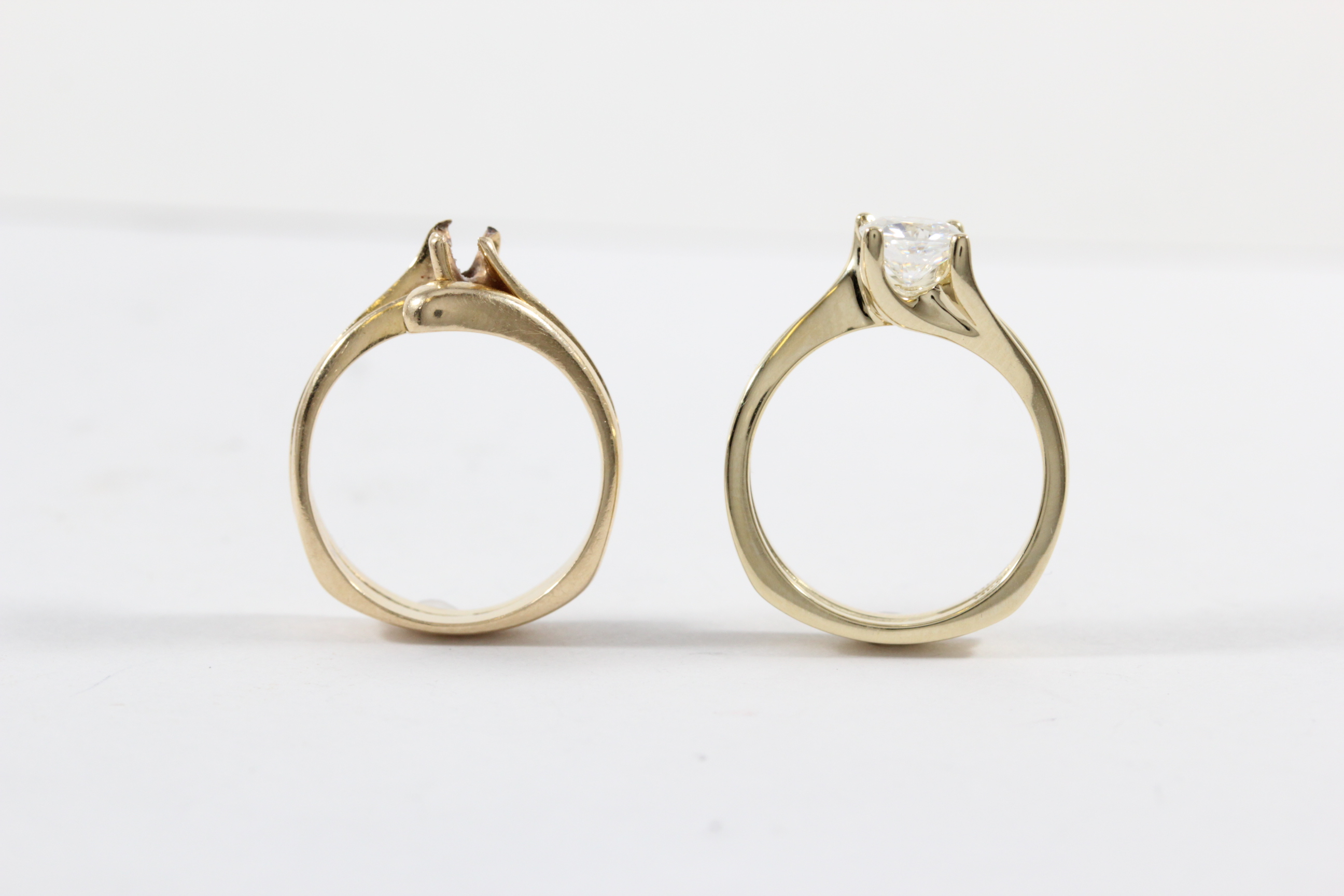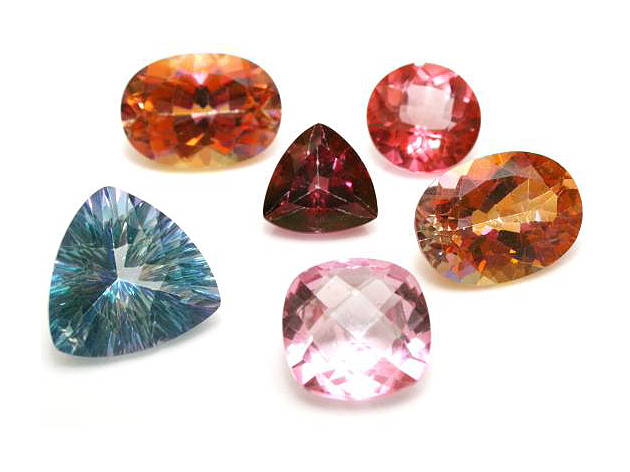Jewelry Modification: What’s Doable?
Written by Annabelle
August 13, 2019

Repurposing and upcycling are the buzzwords of today, and we absolutely love it when our customers come in with old pieces and new ideas. But jewelry modification isn't always easy, and the possibilities are endless. Read on to learn more about what's actually viable when it comes to changing up your jewelry.
What is Jewelry Modification?
Simply put, jewelry modification is a broad term used to describe any action taken to change the design of an existing piece of jewelry. Jewelry modification ranges from stone replacement to changing the setting style depending on the customer's request. Here's a list of common jewelry modifications:
- Stone replacement: Our clients love swapping stones out, and with good reason. A different color can completely change the look of the piece, especially in combination with the metal color. Some people may supply the replacement stone, while others will request for the jeweler to source samples for them.

This pair of vintage buttercup earrings had the original glass stones switched out for cornflower blue sapphires
Oftentimes a customer may want a new stone that is significantly larger or different in shape. This complicates the stone replacement process, because the original setting may not be able to accommodate the new gem. For instance, a 8x6mm rectangle cut cannot fit into a 4-prong setting designed for a 4mm round cut.
Depending on the piece, the jeweler will have to change the setting or make a modified replication of the original design. - Setting replacement/addition: Setting replacement usually happens for two reasons. The piece may need a different setting to fit a new stone, or the client wants to change up the style to something different. The jeweler can usually saw off the original setting and solder a new one to the spot before setting a new gem or resetting the original one.
For setting additions, it becomes a little more complicated. The jeweler will need to assess the piece to see if it can be modified in such a way to accommodate a setting. If doable, they will have to source the necessary components if not provided by the client.
This client gave us an assortment of chains and loose CZs to make into bezel necklaces.
- Color change: Changing the color of metal can be done via a multitude of methods. Most people opt for plating, a non-permanent method of applying another metal on top of the jewelry's surface to make it a different color. Plating can be done with yellow gold in various karat shades, rose gold, and rhodium (a silvery metal that gives the appearance of white gold.)

This princess ring was originally yellow gold; after rhodium plating it looks completely different.
Aside from plating, jewelers can also oxidize, enamel, or e-coat jewelry.
- Oxidation works for lesser metals such as silver, brass, and copper- it is a chemical process that darkens the metal over time, creating a patina that some people find desirable.
- Enameling is the application of hard paint that is baked onto the jewelry and allows for very fine detailing.
- E-coating, one of the newest techniques in the jewelry sphere, coats the entire piece with a semi-transparent coloration made from acrylic and ceramic particles.
- Style swap: The quintessential jewelry modification- converting one type of jewelry to another. We get this a lot with people who have old brooches that they want to make into pendants! The jeweler examines the piece to see how it can be changed into another item, and proceeds to remove unnecessary components. They then source the additional pieces such as pendant bails, ring shanks, and earring backs in the appropriate metal, and attach the components to the design. Once the jeweler is done, you'll have a total conversion, such as cufflinks to earrings or earrings to rings!

These diamond earrings were made into rings by removing the posts and attaching sturdy shanks.

This beautiful vintage pair of garnet cufflinks was converted into leverback earrings.
What If My Item Can't Be Modified?
Not every piece of jewelry is amenable to the jewelry modification process. Recently we had a client who requested for us to “add designs” on the shoulders of a plain garnet ring- an impossible task, since the original casting could not be changed.
When this situation pops up, the only solution is custom creation. The jeweler will consult with a designer, who can take the design of the piece and render a 3D design that will be used for production. Once the client approves of the final design, the item is cast in the requested metal.

This ring came in with a stone that was too big to set. We remade the ring for the larger stone to fit.
Hopefully you now have a better idea about jewelry modification! Whether it's reusing old stones in a new setting, or changing the item type completely, it's possible to re-purpose your pieces in a variety of ways. If you're interested in this service, send us a message here.


